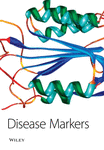The Use of Urine Proteomic and Metabonomic Patterns for the Diagnosis of Interstitial Cystitis and Bacterial Cystitis
Abstract
The advent of systems biology approaches that have stemmed from the sequencing of the human genome has led to the search for new methods to diagnose diseases. While much effort has been focused on the identification of disease-specific biomarkers, recent efforts are underway toward the use of proteomic and metabonomic patterns to indicate disease. We have developed and contrasted the use of both proteomic and metabonomic patterns in urine for the detection of interstitial cystitis (IC). The methodology relies on advanced bioinformatics to scrutinize information contained within mass spectrometry (MS) and high-resolution proton nuclear magnetic resonance (1H-NMR) spectral patterns to distinguish IC-affected from non-affected individuals as well as those suffering from bacterial cystitis (BC). We have applied a novel pattern recognition tool that employs an unsupervised system (self-organizing-type cluster mapping) as a fitness test for a supervised system (a genetic algorithm). With this approach, a training set comprised of mass spectra and 1H-NMR spectra from urine derived from either unaffected individuals or patients with IC is employed so that the most fit combination of relative, normalized intensity features defined at precise m/z or chemical shift values plotted in n-space can reliably distinguish the cohorts used in training. Using this bioinformatic approach, we were able to discriminate spectral patterns associated with IC-affected, BC-affected, and unaffected patients with a success rate of approximately 84%.




